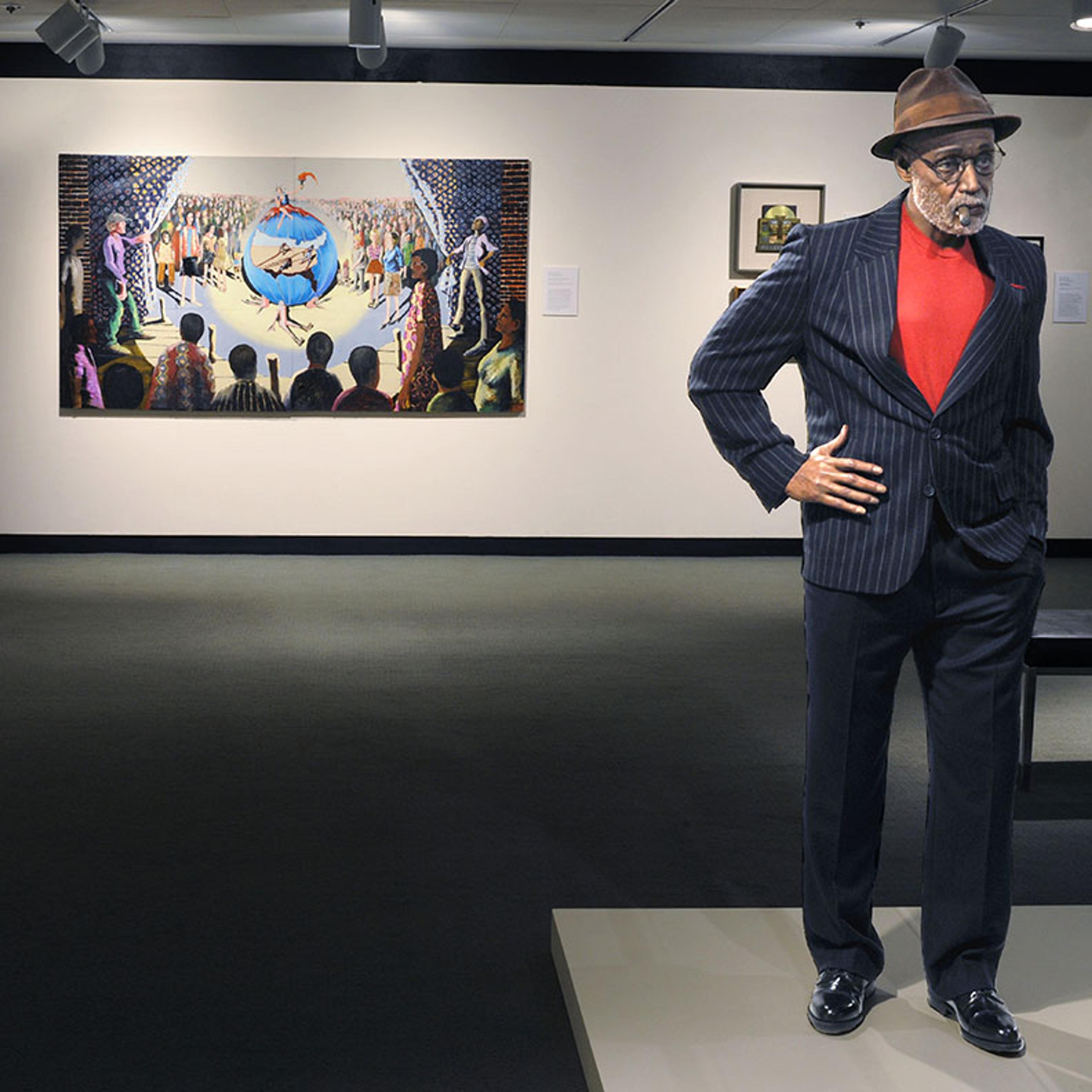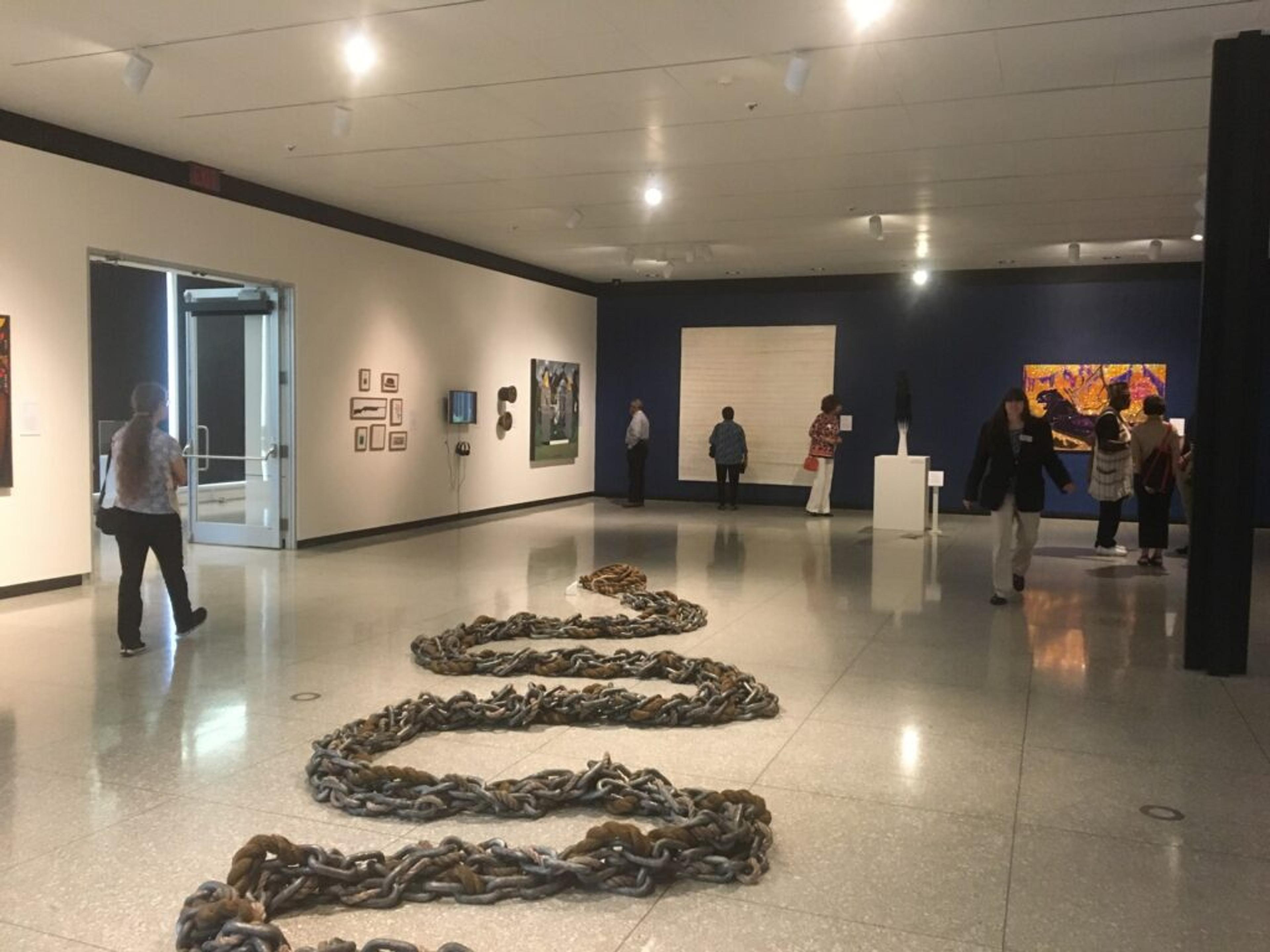
Black Refractions at Kalamazoo Institute of Arts, 2019
Kalamazoo Institute of ArtsPartner Story
In a bold reimagining of permanent collection galleries, works by Black and African American artists create new opportunities for cross-cultural community dialogue at the Kalamazoo Institute of Arts.
Radical Reimagination
From September 13 through December 8, 2019, the Kalamazoo Institute of Arts (KIA) presented Black Refractions: Highlights from the Studio Museum in Harlem, a landmark exhibition organized by the American Federation of the Arts featuring nearly 100 works in all media from the 1930s to the present, including works by artists such as Norman Lewis, Wangechi Mutu, and Lorna Simpson. In addition to “Black Refractions,” the KIA staged two concurrent and complimentary exhibitions — de-installing its permanent collection galleries for the first time and presenting an exhibition featuring works exclusively by Black and African American artists.
During these twelve weeks, nearly 90% of the museum’s gallery exhibition space was dedicated to art created by Black and African American artists, international, national, regional, and local. With support from Art Bridges, this reimagining of the museum was accompanied by a slate of innovative and collaborative programming designed to deepen relationships with community stakeholders and spark critical discourse throughout the region.

Black Refractions at Kalamazoo Institute of Arts, 2019

Black Refractions at Kalamazoo Institute of Arts, 2019
Supporting Programming, Building Capacity
Reflecting nearly 100 years of art history in America, Black Refractions: Highlights from The Studio Museum in Harlem reflect te breadth of The Studio Museum’s 50 years of supporting and incubating artists of African descent. The exhibition creates opportunities for dialogue that expand and challenge audiences’ understanding of American, modern, and contemporary art while addressing universal themes like class, identity, socio-economic power, and social justice. In conversation with KIA’s complimentary exhibitions, Resilience: African American Artists as Agents of Change and Where We Stand: Black Artists in Southwest Michigan, Black Refractions encouraged new ways of seeing, understanding, and talking about art, society, and the world.
By stressing the importance of this exhibition for youth audiences through programming, KIA built a holistic engagement approach that offered multiple opportunities for children and students to see themselves in the galleries and gain exposure to differing points of view. During the installation, young visitors were encouraged to participate in programs like Teen Talk Back with artist Aida Millet and invited to respond to the art on view through interdisciplinary artmaking, writing, and video opportunities.
To prepare staff and docents to host and interpret this new curatorial approach, KIA invited educators from the Studio Museum to help them build capacity by enhancing internal knowledge of the art on view and building the cultural competency necessary to welcome the BIPOC visitors they hoped to attract. These skills and sensitivity will impact the museum and its community well beyond Black Refractions.
Critical Impact
While KIA’s art collection, exhibitions, and programs have expanded to include more diverse voices and perspectives, hosting Black Refractions presented the museum with an unprecedented opportunity to speak to the experiences of Black artists and community members — Learning & Engagement funding from Art Bridges allowed KAI to activate these works in ways that created lasting relationships and strong precedent for inclusive practice.
As the only midwestern venue for the exhibition, the KIA shouldered responsibility for sharing Black Refractions and the two complementary exhibitions widely throughout the region. To ensure the widest possible audience with the deepest possible engagement, the KIA partnered with over twenty-five local organizations to ensure that all programming was appropriate, inclusive, diverse, equitable, and accessible.
With the goal of elevating and amplifying the work of community artists, collectors, and scholars, KIA hosted Vision & Visibility: Diversity, Inclusion, Contemporary Art+Culture, a symposium examining the evolving visual language and national discourse around artists of color as advanced by collectors, artists, and arts institutions. Funded by Art Bridges, this day of critical conversation explored the exhibition, dissemination, and impact of Black visual culture upon the global arts community.
The result of these combined efforts was the most well-attended exhibition in the museum’s history, welcoming thousands of visitors over the course of 12 weeks. Art Bridges is proud to partner with organizations like the Kalamazoo Institute of Arts, who activate bold curatorial approaches with deep and multi-centered programming to build bridges and spark conversations with and for audiences about our common humanity.
“I am always seeking opportunities to maximize community impact through our collection and exhibitions. In 2018, the KIA was the first to sign up for the Black Refractions tour — I recognized the opportunity to build a communitywide conversation around art and equity for a community eager to learn more about diverse American and global cultures.”
– Belinda Tate, Executive Director at the Kalamazoo Institute of Arts, Encore Magazine
Why We Love This Project
Through intentional and sustained collaboration with a cohort of community stakeholders, KIA deepened their connection with underserved audiences. We love the way the Institute blended local, canonical, and national perspectives into a cohesive approach to programming that activated this exhibition in ways that made all visitors feel valued, and bravely challenged expectations about what’s possible within the galleries of this historic regional museum.
Latest News

Welcome Anne Kraybill, CEO
We are pleased to announce Anne Kraybill as Chief Executive Officer of Art Bridges!
Read More